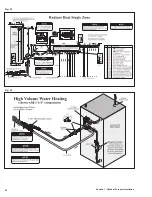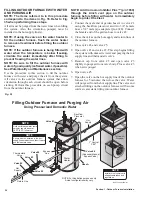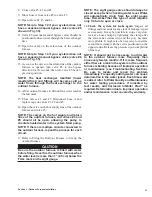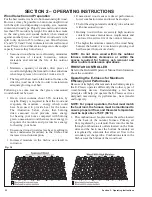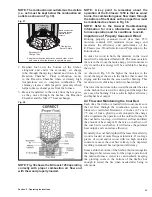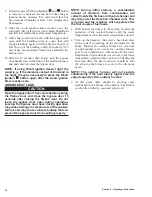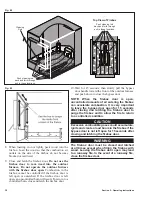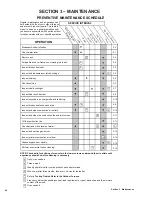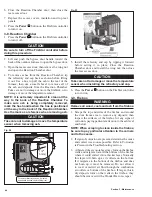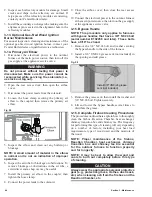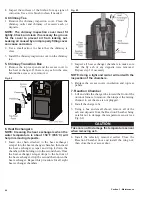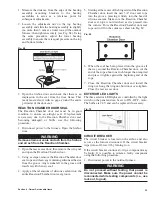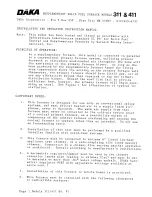
41
Section 3 - Maintenance
CONTROL LOCATIONS
Fig. 44
Fig. 45
© 2011 Central Boiler
ROUTINE MAINTENANCE
CAUTION
Use only genuine Central Boiler Parts and
Accessories if it ever becomes necessary to
replace any component of the outdoor furnace.
Routine inspections and maintenance are essential to the
proper operation and longevity of the outdoor furnace.
The items indicated in the preventive maintenance
schedule are intended to serve as a guideline. Actual
intervals between inspections and maintenance may
vary depending on a number of factors, including your
heat load requirements, type of wood used, and outdoor
temperatures.
NOTE: Proper maintenance of the firebox,
Reaction Chamber, heat exchanger, chimney
transition box and chimney tee are essential
for the outdoor furnace to function properly
and for longevity.
CAUTION
Do not burn plastic, garbage, treated wood or
fuels not listed for this outdoor furnace.
NOTE: Chloride or sulfurous gases can be
generated if plastic or rubber is burned and will
mix with the moisture from the wood to form
hydrochloric or sulfuric acids in the firebox,
creating corrosion.
Creosote - Formation and Need for Removal. When
wood is burned slowly, it produces tar and other organic
vapors, which combine with expelled moisture to form
creosote. The creosote vapors condense in the relatively
cool chimney flue of a slow-burning fire. As a result,
cresote residue accumulates on the flue lining. When
ignited this creosote makes an extremely hot fire.
The chimney connector and chimney should be
inspected at least twice monthly during the heating
season to determine if a creosote buildup has occurred,
and to check for corrosion or condensation. If creosote
has accumulated it should be removed to reduce the risk
of a chimney fire.
WARNING
The chimney and chimney connector must be
clean and in good condition.
NOTE: A small intense fire is preferable to a large
smoldering one to reduce the amount of creosote
deposition. The wood load should be matched to
the heat load.
3-1. Water Level
Open the sight gauge valve. The sight gauge tube will
fill to indicate the level of water in the outdoor furnace.
Be sure to close the sight gauge valve after checking
water level. The sight gauge valve and tube will drain
when the valve is closed.
3-2. Vent Cap
Check that the vent cap fits loosely on the vent opening.
WARNING
The outdoor furnace vent cap must fit loosely on
the vent opening (Fig. 1). Do not force the cap
down or try to seal it tightly onto the vent pipe.
Do not extend or restrict the vent pipe or opening.
DO NOT ALLOW THE OUTDOOR FURNACE TO
BE PRESSURIZED.
3-3. Ashtrol
Add Ashtrol to the firebox. Use a spoon as directed
to broadcast the powder in the firebox, alternating the
location. For example, broadcast on the fire or hot coals
one day and then on the walls the next day. Ashtrol is a
pH modifier that helps to neutralize acids that may form
in the firebox.
Summary of Contents for e-Classic 1450 IR
Page 17: ...15 Section 1 Outdoor Furnace Installation...
Page 29: ...27 Section 1 Outdoor Furnace Installation Fig 30 Fig 31...
Page 30: ...28 Section 1 Outdoor Furnace Installation Fig 32 Fig 33...
Page 66: ...64 E CLASSIC 1450 WIRING DIAGRAM Section 6 General Information...
Page 67: ...65 Section 6 General Information E CLASSIC 1450 WIRING DIAGRAM OPTIONAL POWER IGNITION...
Page 69: ...67 NOTES...
Page 70: ...68 NOTES...
Page 71: ...69 NOTES...


